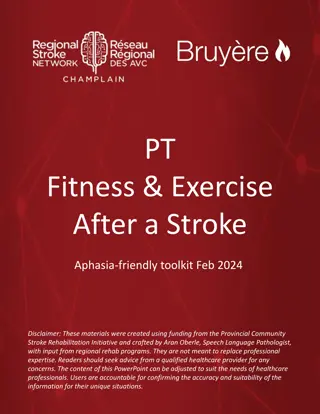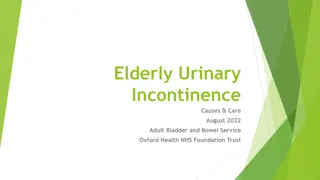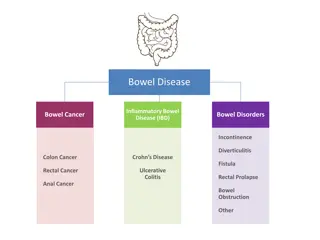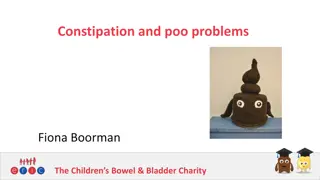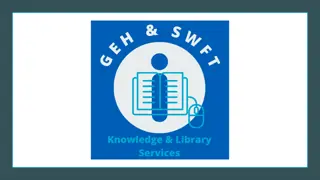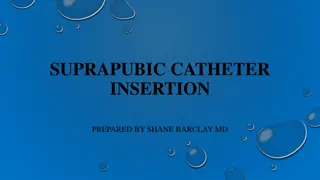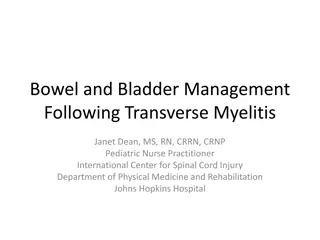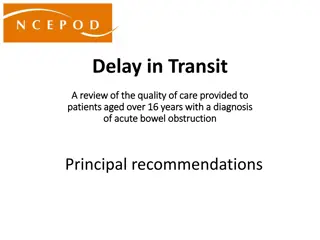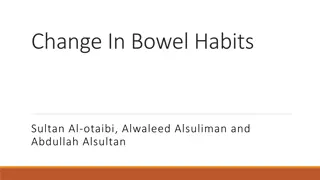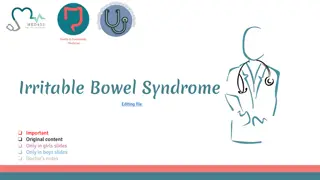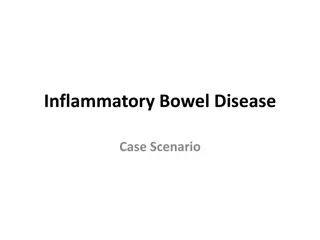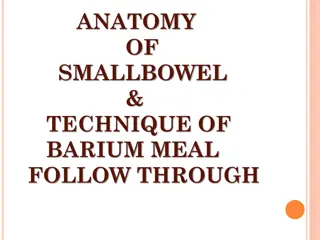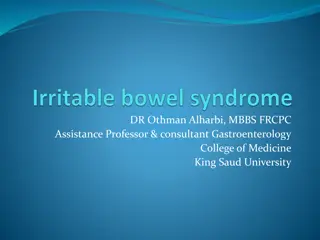Understanding Bowel and Bladder Issues Post Stroke
Bowel and bladder incontinence are common after a stroke, often due to brain damage affecting control functions. Factors like mobility can exacerbate these issues, leading to discomfort, infections, and other complications. Managing incontinence involves assessing individual needs, recognizing signs, and closely monitoring for complications like urinary tract infections. Improving awareness and addressing incontinence can enhance quality of life and mental well-being for post-stroke individuals.
Download Presentation

Please find below an Image/Link to download the presentation.
The content on the website is provided AS IS for your information and personal use only. It may not be sold, licensed, or shared on other websites without obtaining consent from the author. Download presentation by click this link. If you encounter any issues during the download, it is possible that the publisher has removed the file from their server.
E N D
Presentation Transcript
T O P I C : Bowel and Bladder Function After Stroke
Bowel and Bladder After Stroke Bowel and bladder incontinence are common after stroke Can be a result of damage to the part of the brain that controls bowel and bladder function Many factors (e.g. mobility) can increase bowel and bladder issues People with bowel and bladder issues may: require frequent trips to the bathroom not make it to the bathroom in time have issues with urinary tract infections 2
Bowel and Bladder After Stroke What you should know: > 45% of persons with stroke in LTC experience incontinence Bowel incontinence is less common than bladder incontinence Women have higher rates of incontinence after stroke than men Incontinence after stroke is associated with poor outcomes Incontinence can lead to: pain dehydration skin breakdown falls infections 3
Bowel and Bladder After Stroke What you should know: Incontinence may lead to isolation and issues with depression Reducing incontinence can improve quality of life and self-esteem Increased awareness of incontinence can help to reduce stigma 4
Bowel and Bladder After Stroke Smart Tips: Assess factors that impact incontinence Get to know the person and how they indicate their need to go to the bathroom For language/communication barriers, use pointing/gestures or pictures Monitor bowel and bladder patterns, diet and fluid intake 5
Bowel and Bladder After Stroke Recognize signs of incontinence, such as: frequent urination soiled/wet clothes or linens strong odour urine/feces on bathroom floors toilet paper as padding inside the underwear increased usage of incontinence products 6
Bowel and Bladder After Stroke Closely watch for signs of urinary tract infection: strong odour minimal urine output increased urgency discomfort when urinating blood in urine lower abdominal/back pain/pressure increased confusion/agitation increased fatigue fever 7
Bowel and Bladder After Stroke Set up the room for easy and safe access to the bathroom Apply strategies from the care plan: Encourage use of commode/urinal Toileting 30 minutes after a meal Regular toileting throughout day Limit caffeine intake Offering decaf coffee or herbal teas 8
Bowel and Bladder After Stroke Encourage water intake, especially morning and early afternoon Educate the person and their family Provide emotional support and reassurance 9
Bowel and Bladder After Stroke Seek extra support Persons with incontinence should be assessed by a trained professional When you notice signs of incontinence or a possible urinary tract infection, report it immediately Smart Tips for Stroke Care (2023) was created by members of the Regional Stroke Networks of Ontario. This material may be shared without permission from the authors, without changes and with source credited. 10



